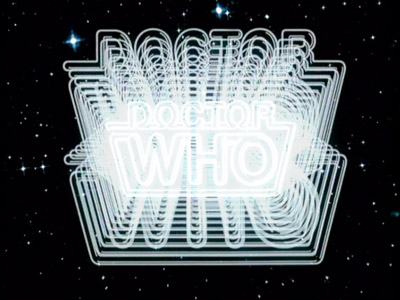The Arc of Alchemy (Doctor Who: Season Twenty)
 What is it about anniversaries? We made another circle around the sun, that’s all. Well, not a circle. An ellipse. There are no perfect circles in the universe. There is no perfection in the Universe, let alone in Doctor Who’s twentieth season, back in 1983.
What is it about anniversaries? We made another circle around the sun, that’s all. Well, not a circle. An ellipse. There are no perfect circles in the universe. There is no perfection in the Universe, let alone in Doctor Who’s twentieth season, back in 1983.
But perfection is so much more boring than messiness, than the chaos that lies at the heart of all truly surprising art. Perhaps that’s why we love Doctor Who so much, why it even works—the mercurial element of the show feeds on chaos, on messiness, on constant change, which is truly the natural arc of history, not to mention the unfolding of the cosmos.
Back in Season Eighteen, we had something resembling thematic unity for the season, and on a cosmic scale: Entropy. Yes, it’s explicit in Logopolis, a force that only psychomathematics can shunt into a box for safe keeping. But it’s present throughout the season. You’ve got it working on the Argolins in The Leisure Hive. Its perniciousness is what prompted the Logopolitans to create a CVE through which the Doctor and Romana fly in the third episode of the season. The “state of decay” they later find in E-Space. The collapse of the Warriors’ gate. The dying of the Keeper. The gobbling up of Traken. And, of course, the fall of the Doctor. The Arc of Entropy: death comes to us all.
Entropy is a state of decay. It is vampiric, sucking away order and producing chaos. But look what entropy actually produces in Season Eighteen—it’s not all doom and gloom. There’s still a circle. The Argolins are renewed. The Alzurians have their evolutionary circle. So too do the lion-men of the Gate. And, of course, there’s the resurrection of the Doctor, at the “Pharos” project, no less. So while entropy is a metaphor for death, it is trumped by the Eternal Return implicit in the structure of the show.
With all that in mind, let’s take a look at a similar thematic resonance that permeates Season Twenty, the first self-conscious “anniversary year” of the show. Because it’s fascinating. There’s more here than anniversary appearances and the nostalgic trotting out of old memories. But let’s get past the reverie of the past. When dipping into those memories, let’s bring them up from the deeps and look at them with free eyes, fresh feelings, that we might better understand Season Twenty’s “arc to infinity.”

 People of the universe, please attend carefully. The message that follows is vital to the future of you all.
People of the universe, please attend carefully. The message that follows is vital to the future of you all.




